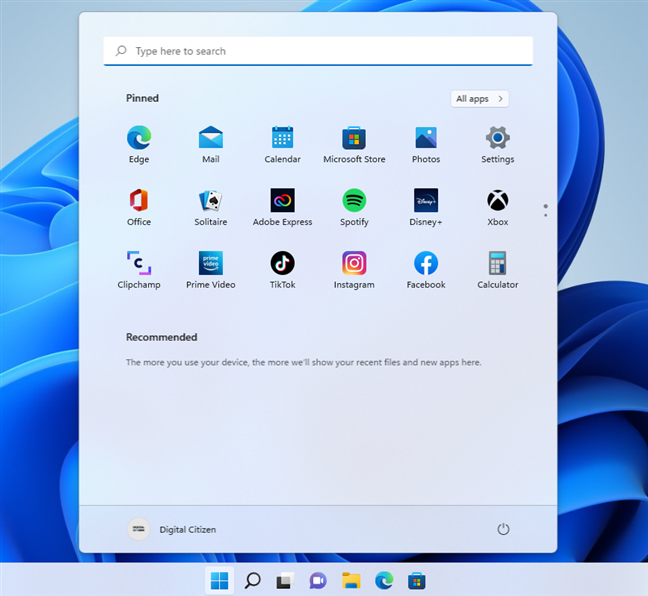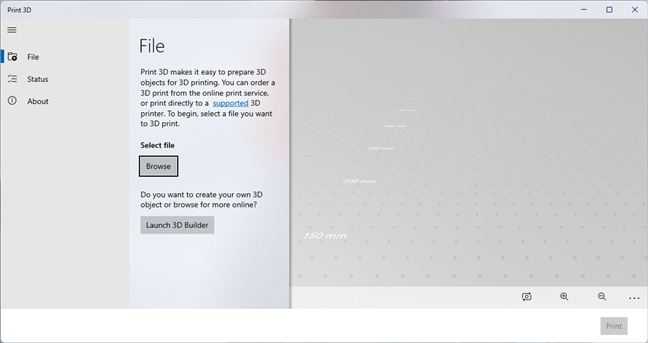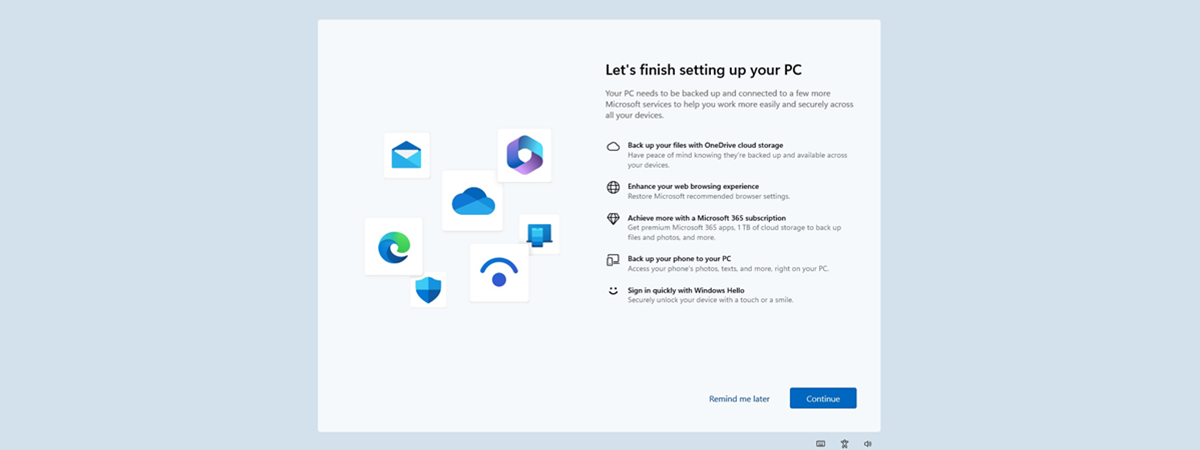
Since their first versions, both Windows 11 and Windows 10 had bundled apps that Microsoft wanted us to use, even if we had other ideas. That still holds true today, in 2022. Some of the apps included by default in these operating systems are bloatware: software that we don’t want or need but is preinstalled on all Windows computers and devices. Unfortunately, there are more than just a few such apps on every Windows installation, both on new and old PCs and devices. Here is what you might find on yours if you are using a recent version of Windows 10 or Windows 11:
Microsoft bundles bloatware by default in Windows 11 and Windows 10
Windows operating systems bundle quite a lot of unwanted apps. To get a clearer picture of just how much bloatware you get from Microsoft, we decided to make two clean installations of Windows 11 and Windows 10 and compile the list of apps you don’t need. As you’ll see, the list is pretty long and includes both third-party apps and apps developed by Microsoft.

Bloatware shows up in the Windows 10 Start Menu
The Windows 11 and Windows 10 bloatware list (2022)
Here is the list of bloatware you get in Windows 11 and Windows 10:
- 3D Viewer - the app is useful when you want to view 3D models for 3D printing or 3D animations for Mixed reality experiences. Most Windows users will never need or use this app.
- Adobe Express - a freemium app that helps you improve your photos using various editing tools and features. However, in order to use it, you’ll need to sign in with an Adobe account or sign up for one.
- Clipchamp - a video editor that helps you create and edit videos using a relatively simple interface. It also offers social media integration. You need an account to access its features, and more advanced tools and export options are available only if you have a subscription.
- Facebook - the app of the most popular social media network in the world. Unfortunately, it’s an old and rather poorly designed app - even if you use this platform, it’s better in a web browser than in its dedicated Windows app.
- Hidden City: Hidden Object Adventure - a classic hidden objects type of game that requires you to spend energy points to play scenes and puzzles.
- Instagram - the app of the social network bearing the same name.
- Netflix - allows you to watch the movies and TV series available on the Netflix streaming service.
- News - an app developed by Microsoft, designed to give you the latest news from your region. Among others, you get curated news from top providers such as The Washington Post, CNN, and The New York Times.
- Prime Video - the official app for Amazon’s movie and TV series streaming service.
- Solitaire Collection - a free collection of card games based on the original Solitaire. Solitaire has been present in Windows for over 25 years and includes Klondike (the classic Solitaire), Spider, FreeCell, TriPeaks, and Pyramid.
- Mixed Reality Portal - only comes in handy to Windows users with a virtual reality headset or a HoloLens, and a computer powerful enough to run mixed reality experiences. This app should have been made available in the Microsoft Store and not preinstalled on most Windows PCs.
- Roblox - an online game platform and game creation system where users can design their own games and play games created by other players. While free to play, it’s filled with in-game microtransactions.
- TikTok - a popular video-sharing app that lets users create and share 10-minute-long videos.

Bloatware shows up on Windows 11's Start Menu
This year, while clean installing either Windows 10 or Windows 11 on our test computers, we’ve also encountered the following bloatware apps:
- Age of Empires: Castle Siege - a mediocre game developed by Microsoft. It lets you rule your empire through the Medieval Era, featuring several civilizations, including the Britons, Teutons, and Kievan Rus.
- Asphalt 8: Airborne - a car racing game with beautiful visuals and many game modes, in which you can meet and drive speed cars from manufacturers such as Ferrari, Lamborghini, McLaren, and Bugatti.
- Bubble Witch 3 Saga - lets you shoot bubbles to defeat evil. It's a game that both young and old can enjoy, but it's also bloatware for many users.
- Candy Crush Friends Saga - a popular game created by the developers of Candy Crush Soda Saga and Farm Heroes Saga. The game is about cookies and candies and about switching and matching them.
- Candy Crush Saga - yet another Candy Crush game, with different visuals and slightly different gameplay.
- FarmVille 2: Country Escape - Do you remember FarmVille? This is its next iteration: a game in which you enter a world of farming, harvesting, and raising animals.
- Fitbit Coach - a fitness app designed to provide personalized training to keep you motivated on your quest for a healthier lifestyle and a stronger body. One problem with this app is that it has limited free content; to use it, you have to pay a subscription. Also, Fitbit users may not want it on their PCs and prefer this app on their smartphones instead.
- Gardenscapes - a match-3 game in which your primary purpose is to restore a garden to its former glory.
- Phototastic Collage - lets you create collages with modern or classic designs using your photos.
- PicsArt Photo Studio: Collage Maker and Pic Editor - includes a photo editor and a collage maker and lets you edit and stylize your photos using effects, clipart, stickers, and other drawing tools.
- Print 3D - this app is useful only to people with a 3D printer to prepare the printing of 3D objects. Since this is a niche market, most Windows users don't need it, and this app should’ve definitely been placed in the Microsoft Store only.
- Spotify - the official player app for the popular music streaming service bearing the same name.
- Twitter - the official app of the popular Twitter social network. It's useful if you have a Twitter account and prefer using an app to connect to it instead of a web browser.

Bloatware in Windows: Print 3D
As you can see, the list above includes many casual games. They are free to play but also include paid upgrades and options. Most probably, Microsoft makes money from providing a vast number of installations for those games and a commission from in-game purchases.
TIP: If you’re wondering what programs are safe to uninstall from Windows 11 or Windows 10, the answer is all the ones in the bloatware lists above. And, if you want to get rid of them, you can either manually uninstall the ones you don’t need or remove them all at once using a program called Windows 10 Debloater. Here’s how to use it: The fastest way to remove Windows 10 bloatware. Don’t worry, it works in Windows 11, too, not just Windows 10.
It doesn’t stop here. PC manufacturers add more bloatware, and Microsoft shows ads
Unfortunately, the list above only covers the bloatware that Microsoft tends to install by default in Windows. The list gets extended by the manufacturers of Windows PCs and devices, like HP, Lenovo, and Dell. Every manufacturer adds its unique set of bloatware that might include apps like McAfee LiveSafe, WinZip, TripAdvisor, WPS Office, Dropbox, Evernote, or Norton Internet Security.
On top of that, they add vendor-specific apps to provide you with updates for firmware, drivers, tech support options, app portals, user documentation, web storage, notifications, and so on.
As a result, when you buy a new Windows laptop, PC, or device, and you open it for the first time, you get invaded by startup apps, prompts, shortcuts to bloatware, and so on. It's not a pleasant experience, and Microsoft should consider restarting its Microsoft Signature program and allow us to enjoy Windows PCs with zero software bloat, excellent performance, and only the basics you need, delivered out of the box.
Unfortunately, Microsoft takes things even further, choosing to also annoy Windows users with ads that show up all over their operating systems. You might have already encountered them on the Lock Screen, in the Start Menu, or even in File Explorer. For us, these ads are annoying, so we’ve searched for ways to get rid of them, although that’s quite a rocky road. If you dislike ads too, here’s how to remove them from your Windows PCs:

Ads on the Windows 11 lock screen
Apps we don’t count as bloatware but which might not be useful for some users
Besides all the bloatware bundled in Windows, you also get some apps that we don't consider bloatware but which may not be useful to some users with different needs and usage patterns. Windows 11 and Windows 10 also bundle apps such as Maps, Microsoft Feedback, Microsoft Tips, Microsoft Teams, Microsoft Skype, and Phone Link.

Microsoft Teams in Windows 11
Another set of apps that some may consider bloatware is the Office suite of apps, including Outlook, Word, Excel, OneDrive, PowerPoint, and OneNote. The Office app lets you access all your Office apps and get back to your work quickly by showing you your most recently used documents and files. If you don't have the full Office suite installed on your Windows PC, you also get shortcuts to the free Office online apps, which you may find useful.
What Windows apps do you consider bloatware?
Our list of Windows bloatware may not be complete. The list of apps that you consider annoying and useless might be higher than what we shared in this article. Also, depending on where you are and the manufacturer of the Windows PC you bought, you may see different bloatware that we did not mention. Therefore, at the end of this article, tells us whether you found other Windows bloatware that we should add to the list. Some of our friends even suggested that OneDrive and Cortana should be on our bloatware list. We don’t agree - what about you? Let us know in the comments section below.


 28.07.2022
28.07.2022 


